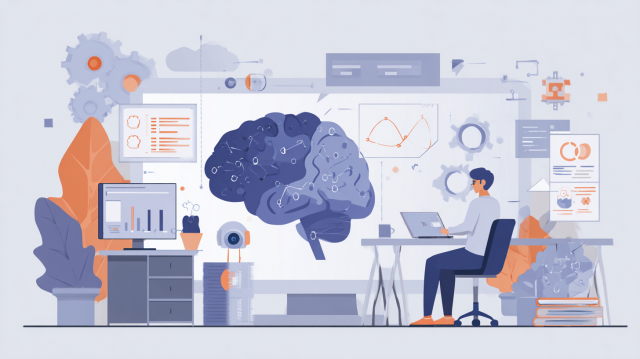
- Table of Contents
1. Increasing Importance of Data Utilization
This is not a new issue, but data-driven management and organizational operations are being emphasized everywhere. While the digitalization of data is progressing in all directions and data is being accumulated, there is a mountain of data that remains untouched and neglected. I believe many companies are facing such challenges. It goes without saying that in recent years, utilizing this data to create new value has become more important than ever for companies and organizations. This time, I would like to talk about "labeling" as a means of utilizing internal data.
2. Structured Data and Unstructured Data
In utilizing data, in addition to the structured and organized data used so far, the key to recent data utilization lies in how to effectively handle unstructured data.
Structured data refers to information such as sales data and customer information that can be represented in "columns" and "rows" in formats like Excel or CSV, making it easy to search, aggregate, and compare, and readily available for analysis. This is typically represented by traditional database data, which has been widely used in conventional business systems such as ERP.
On the other hand, unstructured data is not organized like the structured data mentioned above, making it difficult to extract necessary information mechanically or utilize it in its raw state. To analyze, organize, and make use of it, it is necessary to add attributes or metadata, or to perform some form of processing.
Unstructured data includes a wide range of text data such as emails, social media, and customer reviews, video data such as promotional materials, and audio data such as call logs. By incorporating, analyzing, and effectively utilizing this unstructured data, companies can obtain more multifaceted and diverse information, create new services and value, and differentiate themselves from competitors while addressing comprehensive management challenges.
Comparison of Structured Data and Unstructured Data
 |
 |
|
| Example of Data | Sales and Customer Information | Text data, images, videos, etc. |
| File Example | CSV, xlsx files, etc. | word, pdf, jpg, etc. |
| Data Structure | Expressed in rows and columns, defined based on rules |
No established rules for free description |
| Difficulty of Data Analysis | Easily analyzable as is | It is difficult to analyze as it is. |
3. What are the challenges of utilizing unstructured data?
As mentioned so far, unstructured data has the potential to solve management issues and create new value, but there are challenges in its utilization.
・Large-scale data storage is required
Unstructured data comes in various formats, including images and videos. Handling this requires significantly larger storage compared to structured data. Additionally, unstructured data continues to grow daily, necessitating expansion even after securing storage, which incurs additional costs.
- Managing and maintaining data incurs costs.
Unstructured data ranges from text to video. Since these are not created with predetermined rules or formats, it is difficult to manage them on a database like structured data. For example, let's consider the searchability of information. In the case of videos, the information that can be understood from the file name is limited, and you cannot determine what information is contained without actually opening the file. We must perform tasks to enhance the searchability of various forms of data that accumulate daily. Thus, utilizing structured data also incurs significant costs in terms of management and maintenance.
・Security measures are essential
Depending on the data being handled, it may contain personal or confidential information. If such information is not properly managed on data storage, it can lead to serious incidents such as unauthorized access, virus infections, and information leaks.
4. Utilizing Unstructured Data
To utilize unstructured data, it is necessary to organize the data by assigning attributes and metadata that represent the characteristics of the data, which requires tasks known as "tagging" and "data labeling."
Today, due to advancements in AI technology, tools have emerged that use AI to analyze the characteristics of data and automatically create metadata, and these tools are beginning to be used in various fields.
However, these tools are not all-powerful, and in cases like the following, it is difficult to perform automatic labeling using AI technology, and in many cases, manual and diligent labeling work is still required.
・When specialized knowledge is required
・When the data format is complex
・When context or nuance needs to be interpreted for judgment or classification, or when human sensitivity is required
5. Unstructured Data Labeling Services
Whether or not to use AI for leveraging unstructured data, labeling unstructured data sheds light on the siloed and unorganized data that is dormant within the company, and promoting its utilization can be seen as the first step towards further value creation.
Our services initially started with AI development annotation and data labeling. Unstructured data often contains a high degree of ambiguity, and when utilizing it, it is necessary to clearly define the goals and classify and label it according to those objectives. However, this often requires experience, know-how, and a large amount of resources. Therefore, it can be said that entrusting this task to a specialized company with the necessary expertise is a shortcut to quickly escape fierce competition and reach your goals.
Through our annotation services for AI training data creation, we have accumulated know-how and insights by labeling various types of unstructured data. In addition to annotation for AI training data creation, we have also supported labeling, attribute assignment, classification, and data cleansing of unstructured data for the internal data utilization of various companies.
Not limited to AI development, we actively provide labeling services for unstructured data by leveraging the experience and know-how gained through our annotation services. We are committed to supporting customers who are working to create new value by utilizing data-driven management and the data accumulated within their organizations.
If your company is unsure whether an AI model is optimal but wants to effectively utilize unstructured data that is lying dormant, please feel free to consult with us.
6. Human Science Annotation, LLM RAG Data Structuring Agency Service
Over 48 million pieces of training data created
At Human Science, we are involved in AI model development projects across various industries, starting with natural language processing and extending to medical support, automotive, IT, manufacturing, and construction, just to name a few. Through direct business with many companies, including GAFAM, we have provided over 48 million pieces of high-quality training data. No matter the industry, our team of 150 annotators is prepared to accommodate various types of annotation, data labeling, and data structuring, from small-scale projects to big long-term projects.
Resource management without crowdsourcing
At Human Science, we are involved in AI model development projects across various industries, starting with natural language processing and extending to medical support, automotive, IT, manufacturing, and construction, just to name a few. Through direct business with many companies, including GAFAM, we have provided over 48 million pieces of high-quality training data. No matter the industry, our team of 150 annotators is prepared to accommodate various types of annotation, data labeling, and data structuring, from small-scale projects to big long-term projects.
Support for not just annotation, but the creation and structuring of generative AI LLM datasets
In addition to labeling for data organization and annotation for identification-based AI systems, Human Science also supports the structuring of document data for generative AI and LLM RAG construction. Since our founding, our primary business has been in manual production, and we can leverage our deep knowledge of various document structures to provide you with optimal solutions.
Secure room available on-site
Within our Shinjuku office at Human Science, we have secure rooms that meet ISMS standards. Therefore, we can guarantee security, even for projects that include highly confidential data. We consider the preservation of confidentiality to be extremely important for all projects. When working remotely as well, our information security management system has received high praise from clients, because not only do we implement hardware measures, we continuously provide security training to our personnel.

 Text Annotation
Text Annotation Audio Annotation
Audio Annotation Image & Video Annotation
Image & Video Annotation Generative AI, LLM, RAG Data Structuring
Generative AI, LLM, RAG Data Structuring
 AI Model Development
AI Model Development In-House Support
In-House Support For the medical industry
For the medical industry For the automotive industry
For the automotive industry For the IT industry
For the IT industry






























































































